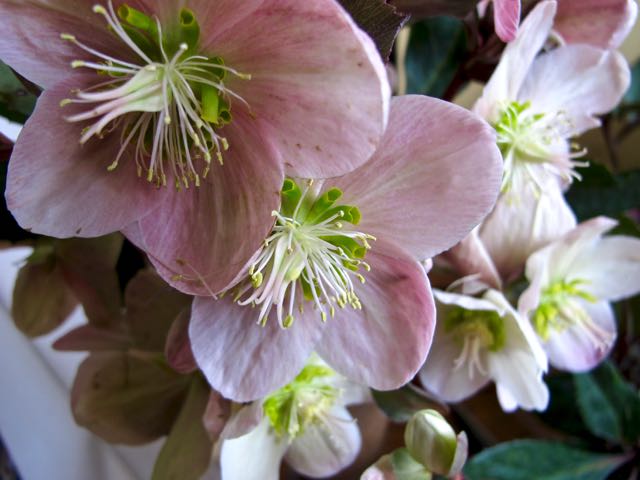Hellebores (Helleborus spp) are fabulous, long-blooming sp
ring flowers for a dry-shade garden like mine. Although I’m hoping to incorporate more native plants in my garden, this gorgeous Eurasian will likely stay – not only for its months-long show of flowers, but as an early-spring pollen and nectar source for pollinators.
In fact, an interesting tidbit from this Oxford University article suggests that yeasts in hellebore nectar can cause it to ferment, warming up the centre of the flower and making it attractive to early pollinators. Cool! Or hot?
Most of my hellebores are single, but I’ve recently invested in a couple of double forms. Then a few days ago on Twitter, I read this tweet from a great gardener I follow. She talks about the difference between double and single hellebores – the doubles lack nectaries, which are the tubular green things in the pictures above.
In the double form, the nectaries are transformed into “petals” or become petaloid. In some cases, I can see that the double petals (really, hellebore “petals” are modified sepals) no longer have cup-like centres. But is this true in all cases (even where the petaloid ruffles remain cup-like)? Haven’t found the final answer yet, but perhaps you know. Give us the deets in the comments.

It’s the sepals that are the coloured “petals” in the hellebore flower, and it’s this reason that the flowers seem to last and last and last for months after the stamens and nectar
ies fall.
To explore the long life of Helleborus in beautiful detail, take a gander at Brian Johnston’s closeups and explanations at the Microscopy-UK site. And for an excellent overview of this useful spring plant, check out this catalog article from Canadian mail-order nursery Phoenix Perennials.
Do you grow hellebores? And, if you grow doubles, how do pollinators respond to them?







4 comments
Oh my, I just spent too much time enjoying the wonderful photos.
If you mean Brian Johnston’s photos, Jessica, I agree completely – although the array of hellebores in the catalog is a tempting distraction, too. I have no affiliation with the vendor, so I say this with total candour.
These are beautiful blooms that deserve to be more widely known by brides. I see they are slowly – very slowly – making their way into winter wedding flowers. Sign of hope: I saw a few bunches at a wholesaler this week. Maybe we’ll see more growers offering them for the cut flower trade?
They are a beautiful cut flower, but I’ve read that like many plants in the Ranunculus family they can be the cause of skin irritation – which might be inconvenient on wedding day. (Insert winkie here!) Here’s a link to some info on these and other common garden plants that can be irritants:
http://www.medscape.com/viewarticle/706404_3